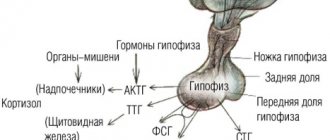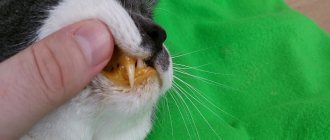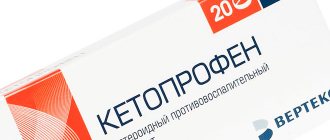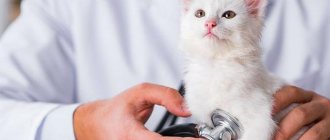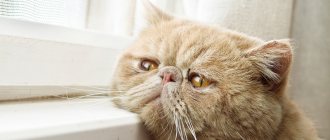4428Pavel
The endocrine system is an important part of the cat's body. When it works correctly, the animal adapts to its external environment, it affects the processes of reproduction and the functioning of the body in a certain mode. Hormonal imbalance in cats leads to the development of many diseases.
The endocrine system of cats is complex and consists of the following components::
- pituitary;
- epithelial body;
- thyroid;
- ovaries in females and testes in males;
- adrenal glands;
- pancreas.
© shutterstock
A cat, like a person, can have hormonal imbalances; no living creature is protected from this; a number of diseases can result from this. The reasons may be different, sometimes due to improper behavior of the owner. So, overfeeding or food that is not suitable for a cat can cause obesity and diabetes. Taking hormonal drugs is also at risk. Sometimes, against the background of previous diseases, such as mastitis (and it can occur in a cat, as well as in a woman after childbirth), diseases of the nervous system can also affect hormonal disruption of the endocrine system.
Obesity
Obesity is the accumulation of excessively large reserves of fat in natural fat depots.
Usually the result of feeding the cat foods that are too fatty or foods rich in carbohydrates. A predisposing factor is a sedentary lifestyle.
Obesity can be a symptom of hormonal imbalance in a cat, a consequence of insufficiency of the thyroid and gonads (in a sterilized cat).
Symptoms
The cat's body takes on a rounded (oval) shape, and skin folds can be distinguished. The cat becomes lazy, moves reluctantly, breathing is heavy with light exertion, the pulse is frequent and small. There are intestinal disorders, manifested in the form of alternating diarrhea and constipation. With a constant sedentary lifestyle, eczema may appear on the skin. In general, the cat's fur is healthy, shiny, and thick.
Treatment
First of all, the cat is prescribed a diet with a predominance of soups in the diet. Long games or walks are required, food is given in small portions 5-6 times a day. Drugs are not used for natural obesity, but for hormonal obesity, the underlying disease is treated.
What tests are required?
If owners suspect a hormonal imbalance in cats, it is important to take the animal to a medical facility. The doctor will prescribe the required hormone tests. The level of estrogens and gestagens, thyroid and adrenal hormones is monitored. In addition, a general blood and urine test is required. Diagnosis is not complete without examining the condition of internal organs that may have suffered from hormonal imbalance.
An ultrasound examination is often done.
Diabetes
The pathology is accompanied by the inability of the cat’s body to process glucose. Because of this, the level of sugar in the blood increases, which is also found in the urine.
The disease appears due to pathology in the functioning of the pancreas, because of this, the concentration of insulin in the blood drops until it is completely absent. Diabetes mellitus can occur due to a malfunction of the brain, thyroid gland, pituitary gland or liver. All these organs are involved in carbohydrate metabolism.
Symptoms
The appetite is greatly increased, the animal is constantly hungry, the cat feels very thirsty and drinks non-stop. He goes to the toilet often, a lot of urine is released, it is light yellow in color with a high specific gravity and density.
Despite high hunger, anorexia is observed. The heartbeat weakens, sexual reflexes disappear. Shortness of breath and cough, catarrhal inflammation of the lungs are observed, intestinal activity is also upset, constipation alternates with diarrhea.
The diagnosis is made after laboratory analysis of blood plasma and urine for sugar levels. In urine, the sugar content increases by 12-15%, and in plasma - by 300-500% (up to 400 mg%).
Treatment
First, a diet is prescribed:
- completely eliminate sugar, white and brown bread from the diet;
- allowed to feed boiled meat, vegetable soups, eggs;
- prescribe multivitamins;
- water is alkalized with regular soda.
Prescribe insulin 7-10 units each time half an hour before feeding.
In the case of a diabetic coma, the cat is first injected intravenously with 20-50 ml of 5% glucose, followed immediately by insulin intramuscularly.
Endocrine system of cats
Endocrine diseases in cats are relatively rare. However, there are several most common ones:
Diabetes
Hyperthyroidism
Obesity
Itsenko-Cushing syndrome
Hypothyroidism
Diabetes
It is characterized by a violation of carbohydrate metabolism caused by insufficient production of the pancreatic hormone - insulin.
Diabetes mellitus is the most common endocrine disease in cats. The saddest thing is that by the time obvious symptoms appear, the disease has often progressed, sometimes to such an extent that all insulin reserves in the body have already been depleted.
What happens with diabetes?
The formation of carbohydrates is enhanced, and their absorption by the body's cells is impaired, which leads to an increase in sugar levels in the blood and tissues, and this, in turn, causes the destruction of pancreatic cells and a decrease in insulin production.
Thus, a vicious circle is created that aggravates the course of the disease. All these changes lead to increased breakdown of proteins and a decrease in their synthesis.
Not only carbohydrate and protein metabolism is gradually disrupted, but also fat, water and mineral metabolism.
The reasons that can give impetus to the development of the disease are the following: metabolic disorders, any infectious processes, trauma to the pancreas or its changes - inflammation, atrophy (reduction in size and dysfunction), sclerosis (replacement of the glandular tissue with connective tissue), hereditary predisposition.
Symptoms. As a rule, the first signs of the disease appear a month and a half before the obvious clinical manifestations of diabetes mellitus - the cat drinks a lot of fluid, urination becomes more frequent, and the amount of daily urine increases.
It is characteristic that urine does not have its own specific odor; it becomes lighter in color. As the disease progresses, the animal’s well-being deteriorates sharply: the cat refuses to eat, the general condition is depressed, and asthenia develops.
Sometimes vomiting occurs once, but it may become more frequent if you continue to try to feed the animal. At this stage of the disease, the smell of acetone appears from the mouth.
Treatment.
Drugs that lower blood sugar are prescribed:
short-, medium- and long-acting insulin is available;
drugs for oral administration;
The choice of drug, its dosage, method and frequency of administration depends on the general condition of the animal and blood sugar levels.
Hyperthyroidism
Characterized by increased thyroid function. It is the second most common endocrine system disorder in cats.
Cats of all breeds, both females and males, and at any age can develop hyperthyroidism. However, animals that are on average older than 9-10 years are most susceptible to this disease. It has been observed that Siamese and Himalayan cat breeds are less prone to hyperthyroidism.
What happens with hyperthyroidism?
The main function of thyroid hormones is to regulate metabolism (the speed of cell work) in the body, and their excessive production leads to the fact that all processes in organs and tissues occur faster.
Causes. The most common is adenoma (benign tumor of the thyroid gland).
Somewhat less frequently, the cause that triggers the development of hyperthyroidism can be adenocarcinoma (a malignant tumor).
An important role in the development of the disease is played by the increased iodine content in feed, a certain habitat, and the harmful effects of insecticides, herbicides, and fertilizers.
Symptoms. The animal loses weight despite eating well. The cat may lose some of its hair, it drinks a lot, and tends to stay in cool places. The animal is overly active, but at the same time gets tired quickly. There is an increase in the amount of daily urine, and sometimes diarrhea and/or vomiting appears.
Treatment is carried out in three directions:
surgical removal of the thyroid gland;
prescribing medications that block excess production of thyroxine (thyroid hormone);
treatment with radioactive iodine - a drug is administered that accumulates in the thyroid gland and destroys tissue with increased function;
Itsenko-Cushing syndrome
Characterized by increased function of the adrenal cortex. The prevalence in cats is low.
The disease occurs in the form of two syndromes - primary (the pathological process develops in the adrenal cortex) and secondary (the function of the brain structures that control the functioning of the adrenal cortex is impaired). The last option is the most common.
The reasons why Itsenko-Cushing syndrome may develop are not so numerous; they include damage to the adrenal cortex and the hypothalamic-pituitary system (it controls the production of hormones by the adrenal cortex and located in the brain). These can be tumors (adenoma), injuries. In addition, the impetus for the development of the disease can be given by taking certain medications, for example, glucocorticoids.
Symptoms . There is a redistribution of fat - excessive deposition of adipose tissue in certain places (abdomen). The skin feels dry to the touch, can be easily injured, and has areas of hyperpigmentation. Muscle tone decreases, hair falls out. The animal has increased thirst and increased urination. The cat has a hard time with physical activity.
Treatment is carried out in two directions: 1) surgical removal of the tumor; 2) prescribing medications that suppress excessive adrenal function.
Diabetes insipidus
Despite the similar name, the disease has nothing to do with glucose absorption. With this pathology, water-salt metabolism in the animal’s body is disrupted.
The exact etiology has not been established, but the disease is often observed after traumatic brain injury, as well as diseases affecting the central nervous system (encephalitis, meningitis, plague). Pathology occurs when the diencephalic-pituitary system is disrupted.
Symptoms
The cat has a strong, unquenchable thirst and increased urination. Appetite is often normal or absent. The urine is light, transparent, there is no sugar or salt in the urine. The cat loses weight, moves little, and develops heart failure. Blood sugar is normal, there is no sugar in the urine, and there is no urea.
Treatment
The prognosis for the disease is unfavorable; symptoms may subside, but the animal cannot be cured. Temporary and mild relief is provided by the subcutaneous injection of 0.03-0.1 ml of pituitrin. The water is slightly acidified with acetic acid. In the diet, reduce the amount of animal proteins and salt, increase the amount of plant foods.
Symptoms and treatments
Hair loss can be caused by skin diseases.
Allergic reactions
With these diseases, symptoms can vary - it all depends on the cause that led to baldness.
In addition to the characteristic feature of the absence of hair in areas of the ears, eyes, mouth, inner thighs, the following is also observed:
- skin redness;
- unbearable itching (especially flea dermatitis);
- in some cases, local body temperature rises;
- Even less common is sclerotization or thickening of the skin, as a result of which it becomes wrinkled, dry, strewn with multiple small whitish scales, reminiscent of dandruff.
An important point in therapy is the detection (identification) of the allergen and the exclusion of the animal’s contact with it. An allergen can be anything: food, cat cosmetics, pollen, dust, etc. The use of corticosteroids, antihistamines and ointments is indicated as a specific treatment.
Skin diseases
It was already mentioned above that a large number of factors contribute to the appearance of dermatitis: mainly damage to the skin as a result of chemical, physical and mechanical influences (trauma, burns, radiation, etc.).
Typical symptoms include:
- hair loss in the affected area;
- the presence of rashes of various types (papules, vesicles, wounds, erosions, crusts, etc.);
- peeling with seborrhea;
- red swollen spots on the skin and increased local temperature;
- sclerotization (thickening) of the skin.
First of all, the cause that caused the dermatitis is found and it is removed. Afterwards, they resort to symptomatic treatment: antibacterial lotions and antibiotic therapy in case of pyoderma (purulent inflammation), special alcohol dressings, novocaine blockade, emollient ointments.
Good results for any type of dermatitis are obtained by applications with Vishnevsky ointment on castor oil or ASD-3.
Under no circumstances should you use any irritating ointments if the cause of dermatitis is external medications.
For trichophytosis
There is no hair on the affected areas, there is a grayish coating, and when microflora enters, purulent inflammation of the sebaceous glands develops. The most typical signs: redness, itching, formation of scales and crusts.
For ringworm
areas of alopecia are strictly delineated; in the atypical form, the cat experiences itching and increased shedding without focal hair loss.
They are treated with a special vaccine (Vakderm, Microderm, Polivac) and local use of antifungal drugs.
Digestive tract problems
Not all owners know that feeding a cat smoked meats, pickles, and table foods is strictly prohibited. Ignoring this simple rule can lead first to mild indigestion, then to gastritis and finally end in hepatitis and kidney problems. Any of these diseases necessarily weakens the immune system, disrupts metabolism, resulting in increased shedding until areas of baldness appear.
It is quite logical that the treatment consists of:
- in eliminating the very cause of the disease;
- specific therapy for a particular disease;
- strict diet;
- the use of vitamin-mineral complexes;
- and in some cases, immunomodulators aimed at restoring the body’s general resistance.
Baldness as a result of hormonal imbalance
In addition to the notorious hair loss, the cat will also have additional symptoms:
- thinning of the skin;
- the appearance of hyperpigmentation;
- skin wrinkling, dandruff, acne.
In addition to the characteristic signs on the skin, increased thirst, increased urination and a bloated abdomen are noted. Treatment is prescribed only by a veterinarian based on a comprehensive examination of the animal: urine and blood tests, hormonal studies.
Hypoadrenocorticism. Addison's disease
Insufficiency of the adrenal cortex leads to a lack of adrenocorticotropic hormones in the blood, especially cortisol. As a result, the amount of potassium in the body increases, which causes the symptoms of the disease.
It is believed that autoimmune reactions are responsible for the occurrence of the disease, but the disease is not fully understood.
Symptoms
The cat loses its appetite, becomes lethargic, dehydration, and anorexia are observed. Possible diarrhea and nausea. The characteristic symptoms are shock and acute renal failure syndrome.
The disease is diagnosed only in a laboratory; low levels of sodium and high levels of potassium are observed in the blood.
Treatment
In acute shock, urgent assistance is required with intravenous administration of fluid (to restore water levels) containing sugar and sodium salts. In the absence of an acute condition, hormonal therapy is prescribed, usually lifelong.
How is the treatment carried out?
Obese animals need walks.
Svetlana Vladimirovna Vasilyeva, a teacher at the Department of Biochemistry of the Veterinary Academy, notes that the course of treatment for hormonal imbalance depends on what disease caused it. If obesity is the cause of the problem, the cat is prescribed a diet, as well as long walks in the fresh air. Eating food should be in small portions at least 5 times a day. When hormonal imbalance is caused by diabetes mellitus, a diet is also first prescribed, after which insulin is prescribed.
Diabetes insipidus cannot be cured, but subcutaneous administration of Pituitrin will help alleviate the symptoms. If hypoadrenocorticism is detected, the animal requires urgent help and instillation of a solution of sodium salt with glucose. For Itsenko-Cushing's disease, treatment involves the use of hormonal medications that help normalize the functioning of the pituitary gland. Sometimes surgery is required to remove the adrenal glands. Hyperthyroidism is treated with thyroid hormones. As for hyperthyroidism, treatment involves the use of radioactive iodine or surgery.
Cushing's disease in cats
The disease is associated with increased levels of cortisol in the blood, which is produced by the pituitary gland.
The reason for the increased formation of cortisol is a tumor of the pituitary gland, its hyperfunction, as well as insufficiency of the adrenal cortex.
Symptoms
When the disease occurs, the skin becomes fragile, bruises appear from any blow, and erosions appear on the skin. The coat is disheveled, hair is missing in places, the skin sags, and is highly pigmented. Characteristic signs are muscular dystrophy, lethargy due to this, as well as extreme thirst and urination.
However, unlike diabetes insipidus, the blood contains a large amount of cholesterol and usually high sugar. The difference from diabetes mellitus is the presence of lymphopenia, eosinopenia, and alkaline phosphatase. For diagnosis, a test for elevated cortisol levels is sufficient.
Treatment
For control, hormones that regulate the activity of the pituitary gland are taken for life. To improve results, one or both adrenal glands are removed.
Acromegaly in cats
The disease is associated with systemic dysfunction of the pituitary gland and increased production of growth hormones.
The disease is caused by tumors of the pituitary gland, usually the pathology develops in old cats aged 8-14 years and older, mainly in male cats.
Symptoms
With this disease, diabetes mellitus develops, so all the signs of this pathology are present: thirst, frequent urination, high appetite. In addition, there are typical symptoms: enlargement of the paws, skull, and other parts of the body. The x-ray shows an increase in internal organs (heart, liver, kidneys, etc.).
Treatment
Doctors often recommend radiation therapy, but such treatment is very long-term and often leads to radiation damage to the nerves and hypothalamus. Without therapy, cats have a positive prognosis in the short term; however, in the long term, all animals die from heart failure.
Predisposing factors
So what is it? This is the name for the accumulation of pus and decay products in the uterine cavity. What are the reasons for such an unpleasant pathology? They are quite complex. Under normal conditions, the uterine cavity is absolutely sterile and impermeable even to lymphocytes. When a cat is in heat, the cervix opens slightly, the same thing happens during childbirth, which is logical. But if some kind of “error” has crept into this physiological process (for example, a persistent corpus luteum remains in the ovaries), the cervix remains open, and pathogenic and conditionally pathogenic microflora can enter the organ cavity.
What makes the situation worse is the fact that, under the influence of hormones, the endothelial lining of the uterus undergoes hyperplasia (that is, grows) and begins to secrete a large volume of liquid secretion, which becomes an ideal environment for the development of bacteria. In addition, the progesterone released during this process blocks the contractility of the muscular lining of the organ, as a result of which the contents accumulated in the uterus cannot be evacuated naturally.
can occur in any cat
, whose ovaries have not been removed, but the vast majority of cases relate to animals older than five years of age. This pathology is almost guaranteed to develop if, due to some hormonal imbalance, it lasts more than 30-45 days. So if you notice an inappropriately long period of heat in your pet, take her to the vet immediately.
Hypothyroidism in cats
The disease is associated with low production of thyroid hormones.
The most common is the removal of the thyroid gland as a result of surgery, or its destruction as a result of radioactive iodine therapy. Very rarely, the disease occurs as a result of pathology of the thyroid gland.
Symptoms
The cat develops apathy, hair falls out, the temperature drops, and this is often associated with a slow heartbeat. Obesity is often observed, and constipation develops.
There is a change in behavior, the cat becomes inhibited, and mental abilities decrease. A large amount of cholesterol is found in the blood, as well as a high erythrocyte sedimentation rate.
Treatment
The only treatment is thyroid hormone replacement therapy.
Clinical signs and therapy
As a rule, the pathology develops quite quickly
, but in some cases it may take several weeks or months before the first clinical signs appear. We draw your attention to the fact that even a sick animal can go into heat, and the discharge is not always cloudy.
One of the important internal secretion organs in domestic animals is the thyroid gland. The thyroid hormones it produces (triiodothyronine and thyroxine) are involved in almost all metabolic processes. A decrease in hormonal production by the gland leads to hypothyroidism, which is a rare disease among representatives of the cat family.
Pathology leads to systemic disorders due to a slowdown in metabolic processes in the body. The disease is characterized by a blurred clinical picture, difficulty in diagnosis, and treatment is based on replacement therapy.
Read in this article

